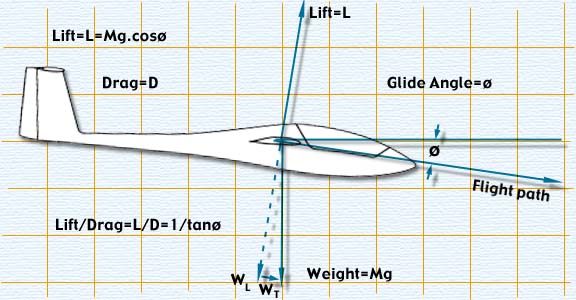FORCES ON A SAILPLANE IN A NORMAL GLIDE:
A powered aircraft uses an engine for forward movement and to get air flowing over its wings to generate lift and sustain flight.
A sailplane trades height (potential energy) for forward motion (kinetic energy) to get airflow over its wings.
At altitude, the weight of the sailplane is being pulled towards the earth by gravity. Without wings the sailplane would simply fall to the ground. But, because of the wings and the way the sailplane is designed, it turns the pulling force of gravity into forward motion. This forward motion forces airflow over the wings to generate lift. Therefore, the sailplane must always descend at a minimum rate.

The weight may be considered as a force opposite of the Lift , L , called W L plus
a force opposite to the Drag , D , called W T which may be combined to give the Resultant Force=Weight=Mg
The force propelling the glider forward is the force W T
Hence the Equivalent Thrust=W T +Mg.sinø


The most modern Sailplanes (like the ASW22 pictured above) can reach glide ratios of 60 to 1 in still air,
if a sailplane is 1000m above ground it can glide...60Km before it will touch the ground! |



